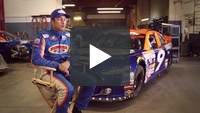Toyota Prius Plug-In Tail Light Assembly
Other Prius models available:
- Highest Quality Parts
- 100% Guaranteed
- 90-Day Free Returns
- Limited Lifetime Warranty
- No Restocking Fees
- Fast Shipping
-
2012 - 2015 Toyota Prius Plug-In Rear Tail Light Assembly Replacement / Lens / Cover - Left Driver Side
Tail Light Lens and Housing for 2012-2015 Toyota Prius Plug-In, Left (Driver), Replacement
High-Quality TYC/DEPO-brand item; OEM #8156147230, Partslink #: TO2800191 -
2012 - 2015 Toyota Prius Plug-In Rear Tail Light Assembly Replacement / Lens / Cover - Right Passenger Side
Tail Light for Toyota Prius Plug-In 2012-2015, Right (Passenger) Side, Lens and Housing, Replacement
High-Quality TYC/DEPO-brand item; OEM #8155147220, Partslink #: TO2801191
Welcome to Go-Parts,
Your Go-To Place for Auto Parts!
Your Go-To Place for Auto Parts!
Are you searching for top-notch, budget-friendly tail lights to enhance your vehicle's visibility and safety? Look no further! Our tail lights are designed to meet and exceed national safety standards, ensuring the best possible driving experience for you and your loved ones.
💎 Why Choose Our Tail Lights?
🏆 OEM-Quality: Our aftermarket replacement tail lights are engineered to match the quality and performance of your vehicle's original equipment, without the hefty price tag. Buy OEM-quality parts for discount prices and save BIG on your next tail light purchase!
🛡️ Safety Assured: Your safety is our top priority. All our tail lights have passed relevant national safety standards, giving you the confidence and peace of mind you need while driving at night or in poor weather conditions.
🚚 Fast & Secure Shipping: Don't wait around for your new tail lights! Our dependable shipping service ensures you get your parts quickly and safely, so you can enjoy your vehicle's improved visibility in no time!
🔒 Go-Parts' Unbeatable Guarantees:
💰 100% Money-Back Guarantee: We stand by the quality of our products. If you're not satisfied with your purchase, we'll give you a full refund, no questions asked!
🔄 90-Day Return Policy: Changed your mind or need a different product? No problem! With our generous 90-day return policy, you can return your tail lights and get the perfect fit for your vehicle.
🏅 Limited Lifetime Warranty: We believe in our tail lights, and we know you will too. That's why we offer a limited lifetime warranty on our products, giving you the assurance you need for a long-lasting, hassle-free investment.
Don't miss out on this opportunity to upgrade your vehicle's tail lights with our high-quality, affordable parts.
Experience the Go-Parts difference today!
Customer-friendly

- No-Hassle Returns
- Live Representatives
Trusted brands

- DOT/SAE Certified
- Limited Lifetime Warranty
Fast Shipping

- Most Orders Shipped Priority Mail
- Distribution Centers in NJ, GA, NV
Secure Shopping

- 2048-Bit SSL Encrypted
Proud Partner of
Ryan Partridge & Sunrise Ford Racing
Proud Partner of
Rick Ware Racing
Proud Partner of
Roberts Racing
ResellerRatings













